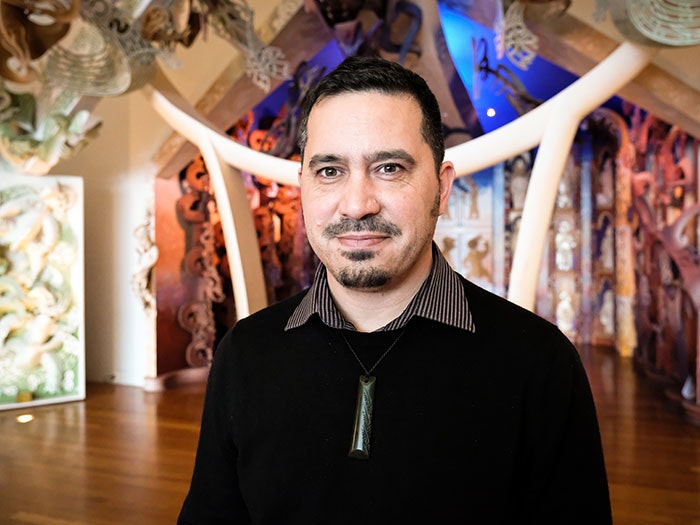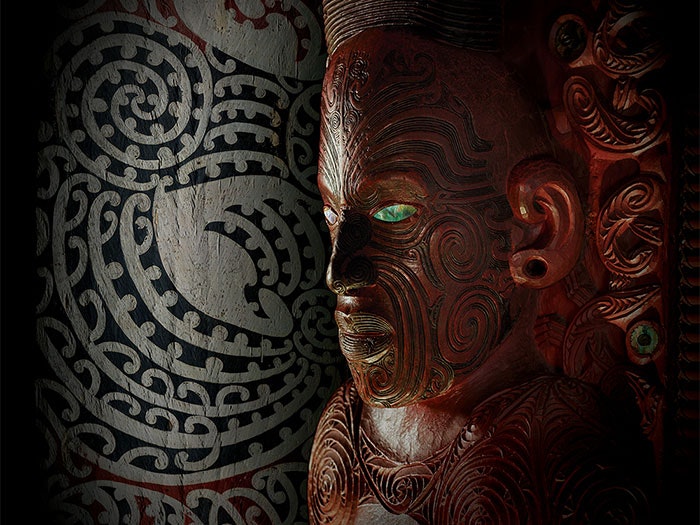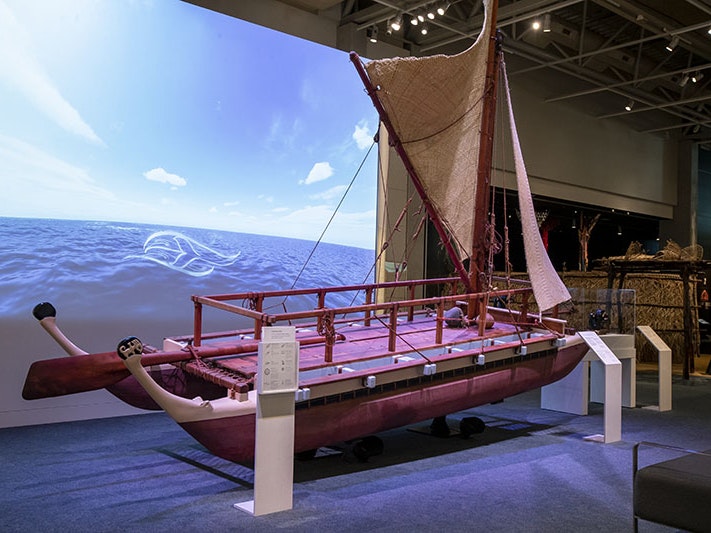
Artist interview: Zak Waipara, filmmaker
Zak Waipara created the animated film Tiwha, Tiwha Te Pō | Dark, Dark is the Night for our latest iwi exhibition, 'Ko Rongowhakaata: The Story of Light and Shadow'.
Free museum entry for New Zealanders and people living in New Zealand
Open every day 10am-6pm
(except Christmas Day)
Free museum entry for New Zealanders and people living in New Zealand
Tama Waipara created the soundscape Te Ripo for our latest iwi exhibition, Ko Rongowhakaata: The Story of Light and Shadow.
Being part of a greater whole. Purpose and place. It anchors me when I'm far from home and centres me when I return.
Every story, intentionally or otherwise, is part of the collective narrative of our people. Having an artistic platform means there is a responsibility to support and honour that connection. I feel privileged to be part of this legacy of artists and storytellers.
Hear a sample of Te Ripo:
Projection work featured in the video: ‘Ripple/Descend’ by Pippa Keel
Te Ripo is a soundscape designed for the Te Poho space. Sound begins with intent. That intention, whether gentle suggestion or purposeful statement, carries impact and reaction. This impact and reaction links space and time. Ripples are memory and message. The soundscape is an attempt to evoke memory, connecting time and physical space through sound.
The soundscape blends layers of voices, synths, koauau, clarinet and natural sounds. These are used to reflect the movement of ripples, the ebb and flow of water and time.
Ruku i te pō, ruku i te ao.
Playing with the idea of submerged/emergent sound and revisited motifs, this acknowledges the links of whakapapa through Turahiri (represented as fish in the swirling projections) and the space of Te Poho.
I also had the privilege of sound design for my brother Zak's animated short film, Tiwha, tiwha te pō.
Tama Waipara, 2017. Photograph by Daniel Crichton-Rouse
The name Waipara carries important history of my tupuna and I feel proud to know the origin of the name and Ngai Te Kete.
In the soundscape, I related the concept of light and shadow as an expression of time and space and depth.
Gathering with my whānau, iwi, and hapu to mark the opening of Ko Rongowhakaata was incredibly emotional and uplifting. I thought of everyone who led us to this point the opportunities they created for us. I remembered those who have passed on and felt their presence with us. I wished for every Māori person in Aotearoa to feel acknowledged and valued in the way that being part of this exhibition felt on the day it opened. I believe that the ongoing validation of our stories, histories and narrative can heal.

Zak Waipara created the animated film Tiwha, Tiwha Te Pō | Dark, Dark is the Night for our latest iwi exhibition, 'Ko Rongowhakaata: The Story of Light and Shadow'.

Explore the land, people, and stories of Rongowhakaata, an iwi whose unique art reflects their innate creativity, rich history, and innovative spirit.
Closed
29 Sep 2017 – 3 Feb 2022
Exhibition Ngā whakaaturanga

Mana Whenua takes you on a stirring journey that explores and celebrates Māori as tangata whenua (the indigenous people) of Aotearoa New Zealand.
On now
Permanent exhibition
Exhibition Ngā whakaaturanga